In the last couple of day there has been a lot of fuss about a video on YouTube about comet ISON , dealing with a photo made by the Hubble STS of Comet ISON april 30th 2013, which shows when made darker three strange glowing stripes in the nucleus of the comet. The videomaker – BPEarthWatch – used for the darkening the software of MAST (Barbara A. Mikulski Archive for Space Telescopes), which is accessible to everyone. Hubble has made the 30th of april-image of comet ISON with two filters, F606 and F814 – here all the individual photos. What the Hubble image-editors do is combine these images into a final image in color. BPEarthWatch used for his video the combined picture of only the F606 filter – a V-band filter that transmits yellow and green light – and what he saw appearing in the nucleus of comet ISON after he darkened the picture a couple of time with the MAST-software is what you see above: three odd strange glowing stripes, that reminds you of everything but a comet. The result of the video is a lot of gossip: ISON comet isn’t a comet, NASA covers up the whole thing, the end of the world is near, the aliens are coming, Nemesis is approaching, etcetera – enter the doomprayers. Below is the video of BPEarthWatch, beneath the video the solution to the riddle.
What’s the explanation of that strange image of the nucleus of comet ISON?
Important for this story is that we are dealing with two moving objects: ISON comet, which has a speed of 77.250 km/h and the Hubble Space Telescope, which revolves with a speed of about 8 km/s around the earth. You can understand that if Hubble takes a series of pictures of the comet with two filters the comet will move relative to the background stars of the Milky Way. In another astroblog I have shown a video of this. I used the three separate images taken with Hubble’s F606 filter and just like BPEarthWatch did with his combined F606-image I made them darker with the MAST-software, so only the brightest parts of the nucleus remains. Each time I placed the center of the editing field – a tiny red cross – on the same background star, which did not move. What I got were these three photos – double click for large version:
You can see that compared to the fixed star background, the bright nucleus of comet ISON slightly shifts and is slightly elongated. The explanation is simple: because of the the motion of the comet in the sky and the revolution of the Hubble Space Telescope around the earth during the exposure time, the comet is at different places in the three images and its core is slightly stretched. The three images with the F606 filter are each made with an exposure time of 440 seconds. The combined picture of the three separate F606-images is the result that BPEarthWatch gets: three elongated lines in the nucleus of the comet. Perhaps you’re wondering: why do the three lines make some kind of an arc? I think this is due to the movement of Hubble and ISON in space, but it also might be the result of Hubble, which is slightly tilted during the period of exposure. See again the video Hubble made of comet ISON and see how the comet is not moving in a straight line relative to the background stars, but is following a kind of S-route.How the Hubble Space Telescope makes images of comet ISON and how they edit them into beautiful colored images is explained on this page.
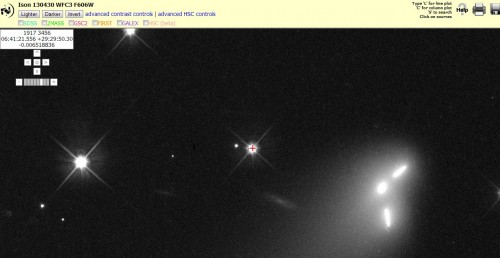
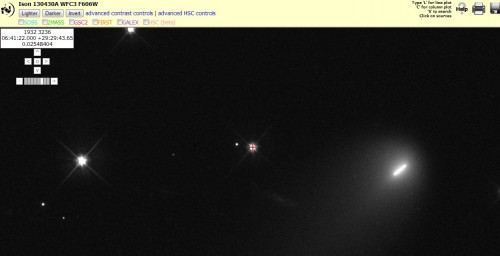
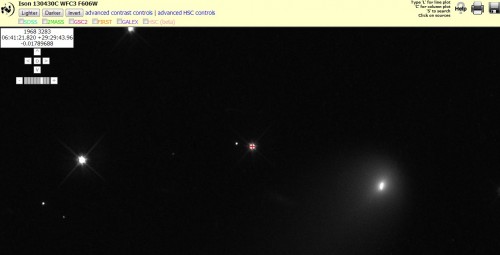
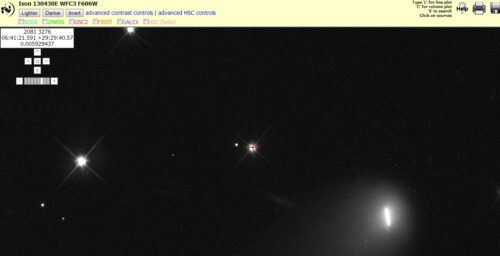
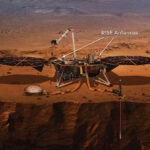
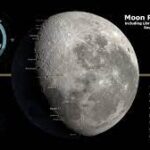
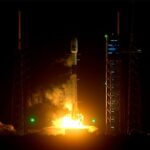
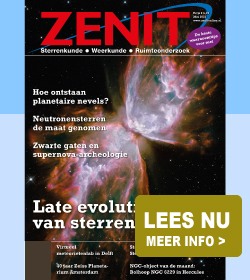

Zo, wat dacht je Arie – het wordt tijd dat we op de internationale tour gaan met AstroBlogs? 😛
Prima hoor, goed geschreven en in beter Engels dan ik zou doen – ik ga de link delen met m’n eeeh…”internationale” facebookvrienden 😉
Iemand op NuJij kwam met de suggestie aan om het ook in het Engels te plaatsen en de link op de YouTube pagina van die BPEarthWatch te zetten. Blijkt alleen dat YouTube links in reacties niet toestaat, zucht….
Da’s balen en zonde van de moeite! Ik heb ff gekeken en het artikel staat ook niet hoog in Google – de Nederlandse versie gek genoeg weer wel 🙁
Google is ook niet gewend dat we in het Engels bloggen. 🙂 Een goeie kennis van mij van vroeger – Jos Haring heet ‘ie, af en toe reageert hij wel eens – heeft wel eens gesuggereerd om de gehele Astroblogs in het Engels te doen. Maar dat vond ik echt te veel werk om alles in het werk te doen, het blijft toch lastig blogs in een andere taal dan je moedertaal te schrijven. En nu zijn we gewoon de enige Astroblog in het Nederlands.
Ja precies, er zijn al tig vergelijkbare sites in het Engels, in het Nederlands onderscheiden we ons tenminste 😉
Als je nu eens de / in de link vervangt door \ ?
Dan is de link niet meer klikbaar, maar als je ‘m doet knippen-plakken dan converteert de browser de link als het goed is automatisch.
Ik heb http://www weggelaten. Wat overblijft moet volgens mij ook al door browsers goed worden uitgevoerd.
Inderdaad, da’s ook een goeie 🙂